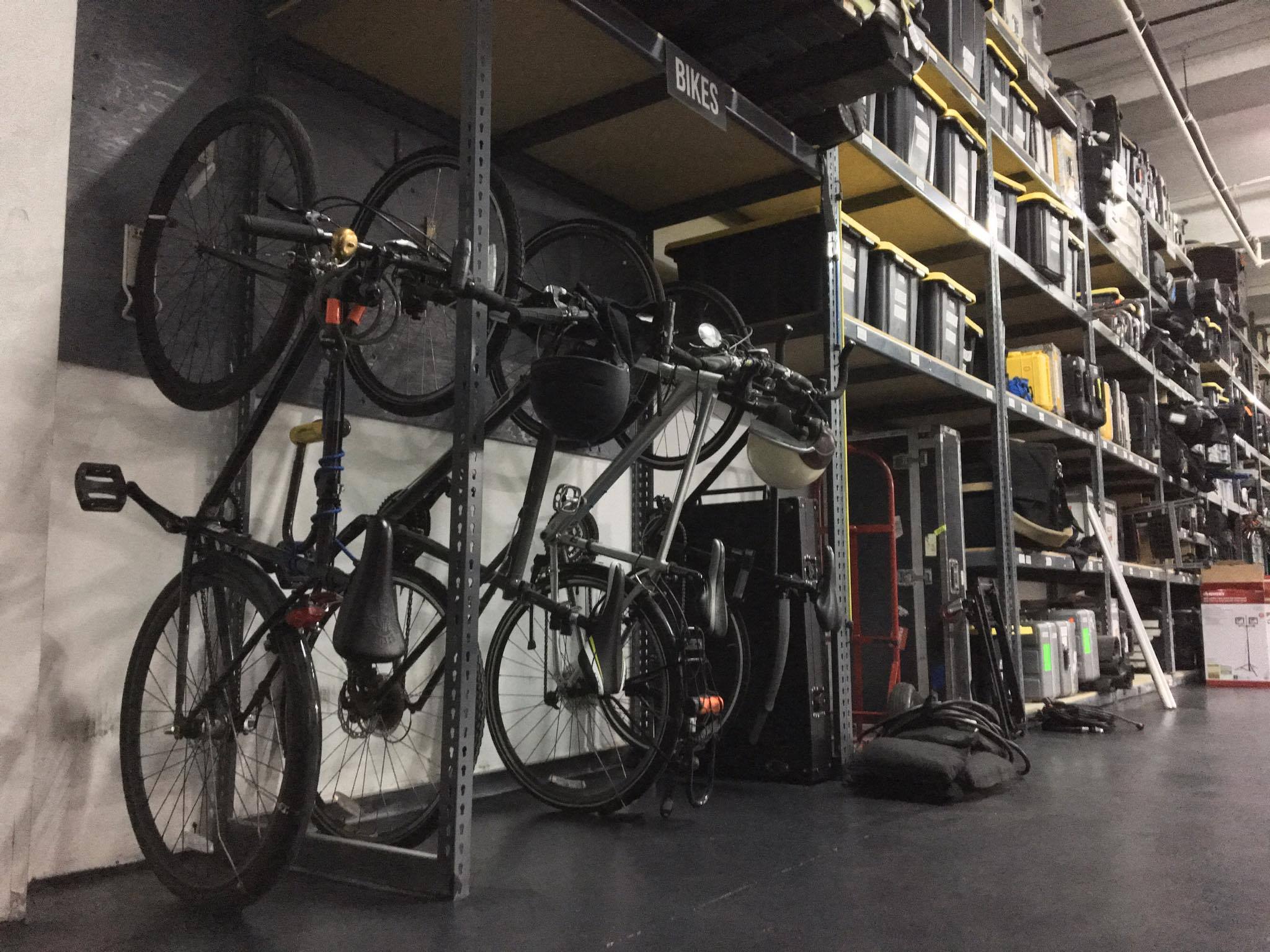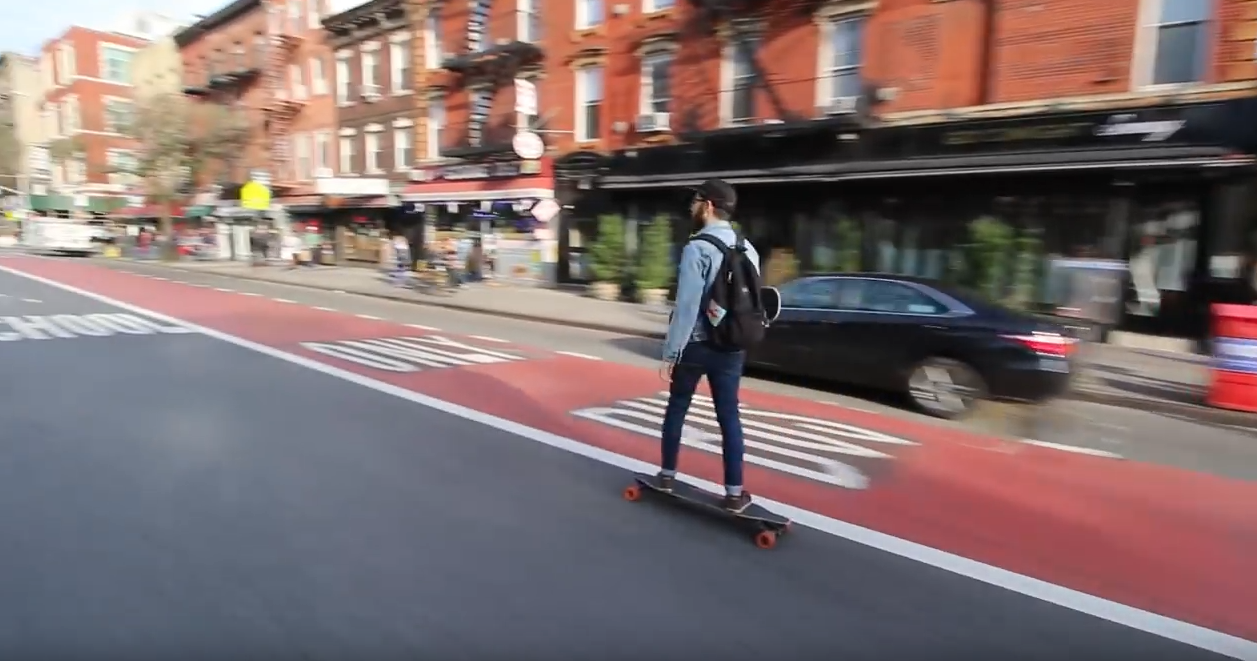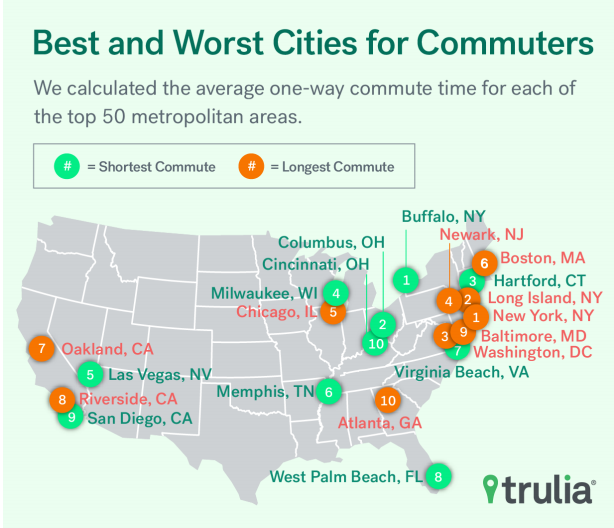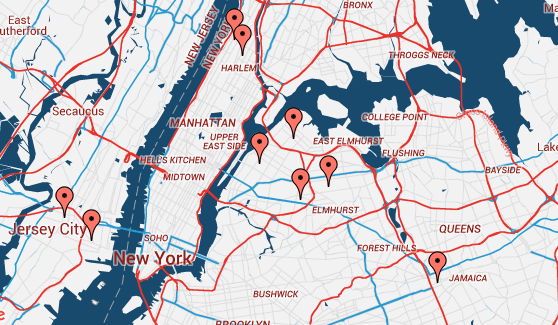Running, boarding, and biking: New Yorkers look beyond the MTA for their commutes

Complaining about the MTA may be New Yorkers' favorite pastime, but according to Census data, about 55 percent of New Yorkers still commute via public transportation. Still, that leaves about 45 percent who do it differently, either because they want to avoid the subway, don't live near public transportation, or see other ways as more convenient and fun (and healthy).
We caught up with four New Yorkers who take alternative methods to get to and from work:
Motorcycle
As long as it's not raining, snowing or too windy, Lloyd Griffin rides his motorcyle from his apartment in Central Harlem to his office in Morningside Heights. "I like the door-to-door aspect of riding to work," he says, "being in control of my schedule rather than waiting on the MTA."
He also appreciates that he can always find parking, and that on most days, riding his motorcycle is faster than public transportation. "When the traffic gets too heavy, I can slip through the cars. That can shave off five minutes or so," he says.
Other perks: "An unobstructed view of everything, [and] the camaraderie between motorcyclists—the secret salute that I knew nothing about until I started riding."
Griffin says he spends around $10 a week on gas, which also happens to be much less than a MetroCard would cost. Of course, there are the electrical repairs needed occasionally. "My bike is in the shop for some electrical repairs that will probably run about $700. So, that means spending about $1,200 on my motorcycle commute."
Safety is an issue he takes seriously. "I never ride without all the requisite gear: helmet; gloves; jacket; eye wear, long pants, and, as an extra precaution, I wear shoes with no laces to be sure that they don't get caught in the chain. I don't ever rush to get anywhere, but I always maintain a speed that keeps up with traffic. When you ride too slow, impatient drivers try to pass in your lane or they do other dumb, dangerous stuff. I always assume that everyone on the road is careless and crazy and that none of them can see me."
For the most part, he says, he feels safe. "I feel nervous around big trucks," he admits, "so I always try to get ahead of them when I can."
Still, he has had a couple of close calls. One of the "dreaded car door variety. The other was the result of impatience on my part. I tried to pass a slow-turning bus that suddenly became a fast-turning bus. Stupid move. I think close calls are a necessary part of the learning curve," he recalls.
Bicycle
"It's a no-brainer," says Autumn Nakamura-Neal of her bicycle commute. She lives in Sunnyside and works in Astoria, Queens—neighborhoods that, despite being adjacent to one another, require a transfer if you're taking the subway.
As the crow flies (or as the New Yorker bikes), though, it's a mere three-and-a-half miles, which Nakamura-Neal covers daily, unless it's pouring or there's snow on the ground. "If I took the train, I'd be going in a U-shape," she explains. Biking is so much faster that she's motivated to use that method instead, even if it's raining a bit.
Queens does not have as extensive a bike lane network as Brooklyn or Manhattan, but she says it's been getting better lately, thanks to Jimmy Van Bramer, the city council rep for the area, who has pushed for more.
Nakamura-Neal is able to use bike lanes for about half her journey, and for the rest of the way, she's on roads that aren't busy thoroughfares, so she doesn't feel in danger when it comes to car traffic. "As far as it being dangerous with cars, I don't feel that way at all," she says.
She sometimes will bike into Manhattan after work to run errands, and usually takes the Queensboro Bridge to get there, which she says is very cyclist-friendly. "I can take bike lanes almost the whole way to the bridge and there's a plaza that makes it really smooth," she explains.
She notes, though, that the Triboro Bridge in Astoria is more difficult to navigate, as it has multiple exits (into the Bronx, Harlem, and on Randall's Island), and that if she's going somewhere in Manhattan that's far from the Queensboro, she'll just take the subway instead.
Her workplace conveniently has a shop area where she parks her bike. "A couple of other people were using it as well, so we talked to management about getting designated space for bikes. They gave us a little area with hooks on the wall, so now it's very bike-friendly and probably inspires others to start biking," she says.
It's worth noting, too, that you don't need a top-of-the-line bike to make it work in the city. Nakamura-Neal bought a three-speed road bike for $400, and hasn't had to pay for any maintenance on it at all. (Given that a monthly MetroCard is over $100, New Yorkers could recoup that investment fast.)
"I couldn't recommend it any more," Nakamura-Neal says of biking to work. "It's cheap, it's healthy, it's good for the environment, and it's likely the fastest way you'll get somewhere in NYC."
For New Yorkers considering making the switch to a bike commute, Nakamura-Neal emphasizes that it's not necessary to spend big on a bicycle. "A tiny bit of investment on a mid-range bike made all the difference for me," she says.

Running
Rather than taking the train about three-and-a-half miles from his apartment on the Upper East Side to his office in midtown west, Alex Marlin runs nearly every day (he's missed only two days since September). It allows him, a busy corporate lawyer, to actually make time for a workout. "I always wanted to work out every day, but before I did this I didn't have the time. Now, when I get to work, I've already checked that of the list for the day."
It helps, of course, that he works for a big firm that has locker rooms and showers.
He folds his work clothes and puts them in a backpack. "Since it's only clothes, and sometimes a pair of shoes, it doesn't get too heavy. I also carry my workbag (a laptop case/soft briefcase) over my shoulder, but that's usually light too."
Marlin also says he doesn't mind getting wet when it rains, and the mild winter has meant that he's worn shorts for all but a couple of days.
"I actually think it's easier to motivate myself to do the run than to get on the train because of the inherent reward," he says. His least favorite part: "Waiting for lights."
It takes about half an hour, he says, about the same as his public transportation commute. And the best part: A good part of the time is spent in Central Park.
"If anyone can take advantage of commuting through Central Park, I highly encourage it," he says, adding the caveat that "this would be close to impossible without a shower at work....The locker room at work clears up most of the logistical issues."
Electric skateboard

Mike Sheffer (pictured above), rides a Boosted Board, an electric skateboard with a motor, from his apartment in Bushwick to his office in the Flatiron District as long as it's over 50 degrees. He goes across the Williamsburg Bridge, and spends most of his time on the bike or bus lane.
"It's way faster than it would be on a regular skateboard, and usually takes about 25 minutes," he says. The subway took about 30 minutes. Boosted Boards are not cheap—he paid about $1,500 for his—but it's a "super well-made product."
"I've been interested in electric skateboards since before they came out." (It's an interest he traces back to the movie, Back to the Future.) "Before the Boosted Board, I had a less impressive board that I would ride, but Boosted is by far the best one on the market today," he says.
When he gets to work, he brings it up to his office, since it doesn't take up much room.
Also, "it's so much more fun than sitting on the subway. I'm outside the whole time." And while he admits it's not the safest way to get to work, it's one of the most enjoyable, he says. Plus, "I generally don't ride at top speed (22 miles per hour) unless I have an open road with lots of clearance. Or I'm in the suburbs," he says.
As far as challenges go, there's an issue of battery limitations (it lasts about 7 miles), but "version 2.0, which should arrive in the coming weeks, has an extended battery range and swappable battery pack."
Sheffer's advice for those interested in the boards too: "Be fearless. Be smart. Obey traffic laws, like a car would."
You Might Also Like




























